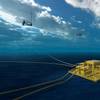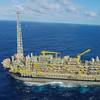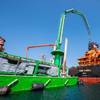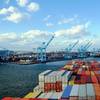Panamanian Ambassador to the U.S. Federico Humbert addresses workshop attendees.
Briefing a crowd of nearly 200 U.S. port and shipping officials at a Panama Canal expansion workshop last week in Tampa, FL, Panama Canal Authority (ACP) Vice President of Research and Market Analysis Rodolfo Sabonge highlighted the Canal project’s progress and its effect on global trade. The forum also emphasized the benefits and importance of U.S. port development in meeting the anticipated demands of an expanded waterway.
Co-sponsored by the American Association of Port Authorities (AAPA) and the U.S. Maritime Administration (MarAd) and hosted by the Tampa Port Authority, the day-and-a-half workshop titled “Shifting International Trade Routes – Planning for the Panama Canal Expansion,” analyzed the changing landscape of world trade, waterside and terminal development needs, financing opportunities and a number of other topics related to the expansion of the Panama Canal.
“As the Expansion Program moves steadily ahead, we foresee the new lane of traffic along the waterway greatly influencing world trade and U.S. ports in particular,” said Mr. Sabonge. “These ports should be ready for larger and bigger ships that will go through the expanded Canal – anticipating the infrastructure needs in the near future is key to their growth,” he added.
Held at Tampa’s Sheraton Riverwalk Hotel January 23-24, the workshop participants also received the latest information and trends regarding infrastructure needs and navigational issues. Workshop speakers included Panamanian Ambassador to the U.S. Federico Humbert, MARAD Administrator Sean Connaughton, AAPA president Kurt Nagle and Tampa Port Authority Director Richard Wainio.
Expansion will build a new lane of traffic along the Panama Canal through the construction of a new set of locks, which will double capacity and allow more traffic and wider ships.
Featured videos

Send in the Drones (to deep, dark, confined maritime spaces)

Taking the First Step Toward Autonomy
Subscribe for
Maritime Reporter E-News
Maritime Reporter E-News is the maritime industry's largest circulation and most authoritative ENews Service, delivered to your Email five times per week











